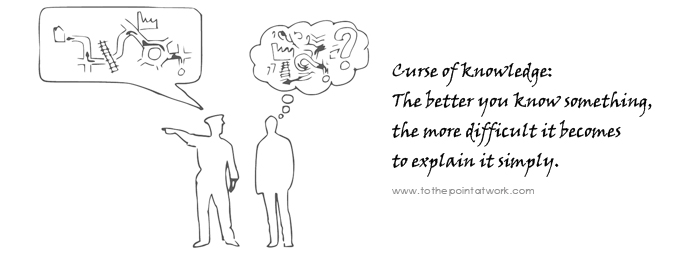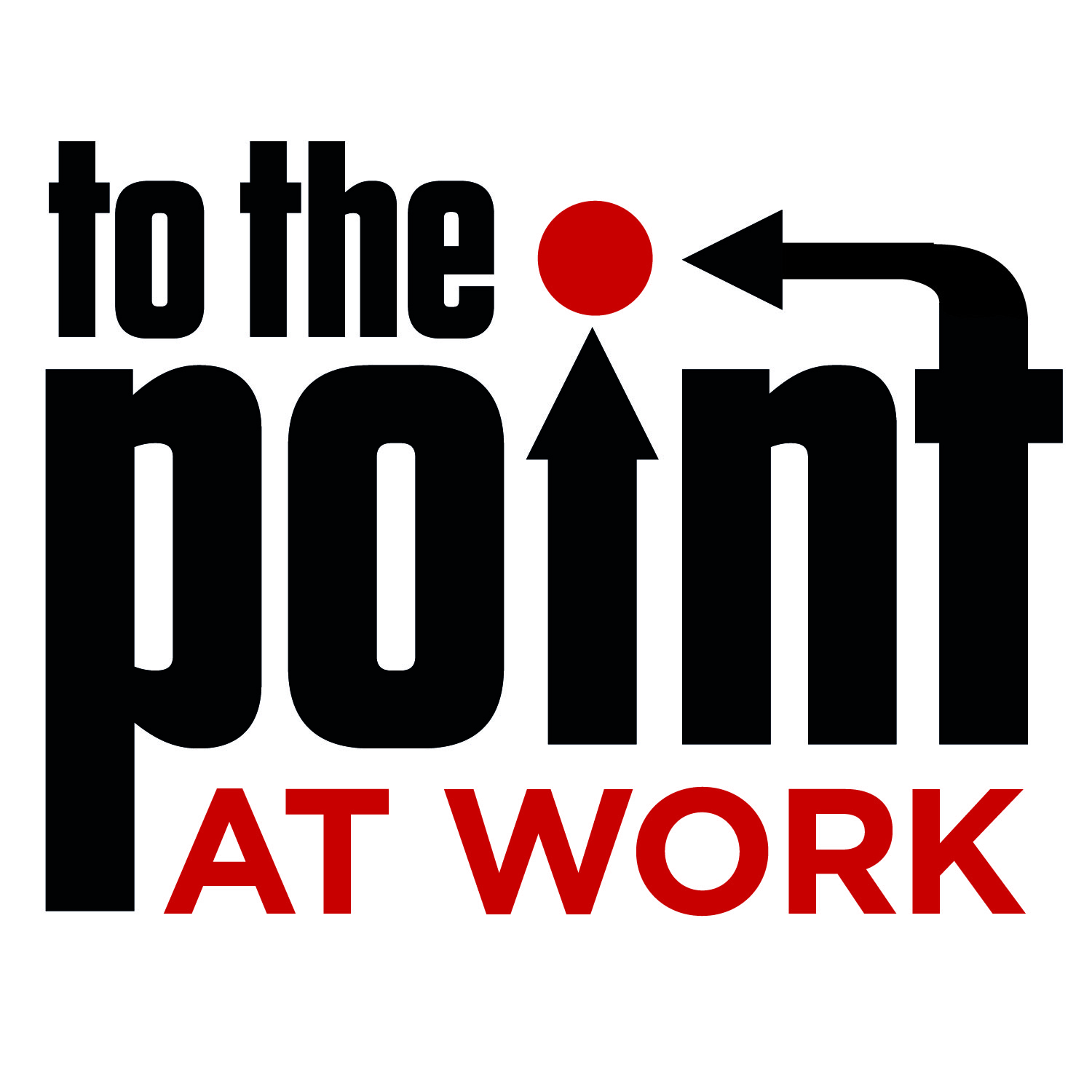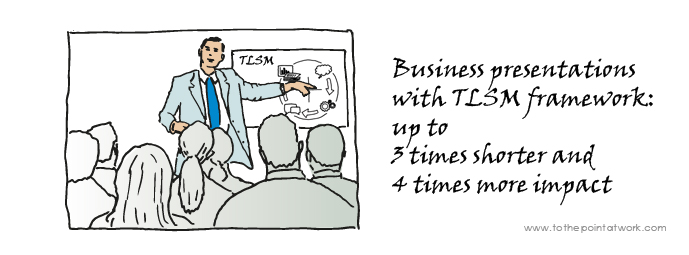This article describes the TLSM framework for a concise and impactful business presentation.
Starting in PowerPoint is the worst you can do.
How do we all prepare a business presentation? We look for slides we already have, then start adding slides, reshuffling and changing them until we feel like having a good story. Not only is this very unproductive, it results in a horribly unclear content despite long hours of work. And because we have worked so much on the slides, it is impossible to see why your story is so unclear to others.
PowerPoint tricks us into incomplete thinking.
Jeff Bezos says: “Power point-style presentations somehow give permission to gloss over ideas, flatten out any sense of relative importance, and ignore the interconnectedness of ideas.” (read more here) When you have pulled a few slides together, you feel like having made progress. But in reality, you have just cast your ill-conceived reasoning into stone. Once on the slide, it becomes difficult to see why your logic is inadequate.
PowerPoint lessens our cognitive capacities.
When we design our content in PowerPoint, part of our brain capacity is consumed by the layout and actions we need to take in order to type, drag, paste, align,… That lessens our capacity to think clearly, without us realizing. There is ample evidence that using a laptop reduces our thinking capacity. (read more here)
Don’t throw the baby out with the bathwater
I have many other criticisms about PowerPoint. But I’m not against it if used in the right way. Most important is to structure your ideas and design the full story before making any slides. Not only will your presentation be much more impactful, you will also gain considerable time.
Use a framework to prepare a business presentation.
How do we get out of bad habits? By forcing yourself through the same series of steps for each business presentation. TLSM is a simple cognitive framework, which I first described in the book “Presentation Thinking & Design”. TLSM stands for Thinking-Logic-Story-Media. It has proven to be extremely helpful for almost any business presentation. Rather than providing a loose set of tips and tricks, it is a framework of thinking to prepare in a coherent way. In the rest of this article I’ll explain TLSM on a high level. This is of course only the tip of the iceberg.
“TLSM is a simple and compelling framework. I guarantee this will make you a better presenter” Julian Birkinshaw, Professor and Associate Dean at London Business School.

TLSM framework in its simplest form

Phase 1: The Thinking
Take a step back and look at the bigger picture. Find somewhere quiet and take time to think about the essence of your presentation.
Answer the key questions before starting any other work.
• My audience: Why should they listen?
• My goal: Why am I doing this talk?
• My key message: How do I summarize everything in one sentence?
• The setting: What can I achieve in the time I have?
Those answers should be clear, short and crisp.
Take 10 to 15 minutes to answer these questions. It really pays off. All too often we make a nice presentation, to realize only afterwards that it was too long, not really adapted to the audience or that the key message wasn’t clear. According to research 38% of all business presentations have zero added value because there was no clear answer to these questions (read about the study here). So, omitting the ‘Thinking’ can lead to a lot of useless work.

Phase 2: The Logic
Before going into a storytelling mode, you first need to fix the objective content of your business presentation. Think logically. What are you going to talk about? And what are you not going to talk about? What is the key of your argument? Are all your ideas logically connected? How can you structure these ideas so that they can be understood easily?
Separate the essence from the nice-to-have.
In this phase it is important to make a distinction between the essential elements of your reasoning and the nice-to-have elements. Select the essential elements first, limit them to what is really needed to make your point. Leave out anything that you would like to say just because it’s interesting, attractive, funny, memorable, illustrative or because you’ve put a lot of effort into it. That is 75% of most business presentations! Don’t panic, we will re-use some of that nice-to-have content later on.
Structure and simplify.
Then structure these essential elements in the most logical, easy to understand way. You will have to make complex things simple. Simplifying means ignoring certain interconnections and promoting others. You will have to leave interesting things out, or exile them to the attachments. Then structure the information in such a way that your key messages become obvious to the audience.
Use a knowledge visualisation tool.
Making something easy for your audience is easier said than done because of the curse of knowledge. The key is to construct your ideas with a knowledge management tool (see an overview of those tools by Martin Eppler here). A popular tool is the pyramid thinking as described by Barbara Minto. But it needs some adaptation because it dates from the eighties, before concepts such as communication overload and storytelling, and before recent insights into the cognitive brain (working memory, or the system1-system2 thinking described by Daniel Kahneman). I will write more about cognitive strategies and knowledge visualisation tools in future posts, you can also read more in my book or learn them during one of our trainings.
 Phase 3: The Story
Phase 3: The Story
Now that you have fixed and simplified the objective content of your presentation, you can turn it into a story. This requires a more creative approach. You must encapsulate your message with appealing and memorable story elements. Without story elements, your talk will hardly get attention and will certainly not be remembered.
Add “nice stuff”, but only when it serves a purpose.
As story elements, you can use some of the nice-to-have that you have left out in phase 2, or you can think of other appealing stories, examples, quotes, jokes, images, and so on. But add them only if they serve one of four purposes:
– attracting attention,
– being memorable,
– illustrating your arguments, or
– evoking emotion.
Don’t put things in just because you like them, because you are proud of them, because they are novelty or to impress your audience. Be critical!
Storytelling is all about detail
Storytelling does not imply one long plot for your whole presentation. Actually you should avoid deductive chronological structures. There are many indications that long stories don’t work in business presentations. But short story elements with plenty of detail do. Or as Anette Simons puts it: “A good story is a reimagined experience narrated with enough detail and feeling to cause you listeners’ imaginations to experience it as real.” Stories become memorable when they are garnished with sufficient sensory detail. This is called Elaborative Encoding.
Chip and Dan Heath describe a study in which researchers prove that the use of vivid details makes an argument in court much more convincing. It features a fictitious case where a jury had to assess a mother’s fitness to educate her child. Different groups of jurors were given two different transcripts. Both had the exact same arguments, but in one only the arguments in favor had vivid details, while in the other only the arguments against had such detail. For example, one would read: “The mother sees to it that the child washes and brushes his teeth before bedtime.” While the other one would add: “He uses a Star Wars toothbrush that looks like Dart Vader.” It turned out that this kind of detail had a significant effect on the outcome even though it doesn’t add any real information.
Visualise.
Undoubtedly images are powerful tools to add vivid detail, structure or emotion. One image is worth a thousand words, we all know that. So find or make strong visuals that visually strengthen your key message or clarify the structure of your story.
Find the right balance between story and logic.
The trick is to find the right balance between storytelling elements of phase 3 and rational arguments of phase 2. Entertaining or inspiring presentations need very little logic and ample story. Business presentations need more rational content. But all need a minimal story-content. Add one story element every 5-8 minutes in order to cope with the short attention span of your audience. According to Time magazine our attention span is shorter than that of goldfish (read here).

Phase 4: The Media
Finally you can open PowerPoint. This 4th phase involves making slides, preparing documents, and preparing yourself.
Draw your slides on paper first.
Better than designing your slides directly in PowerPoint, draw them first on paper. Test your talk with the paper slides and only then make them in PowerPoint. There is no rule as to how many slides you need. It depends on the type of presentation and the style of the presenter. However we see that people who use the TLSM framework typically use 50-70% less slides, and put 50% less information on each slide. Just think of how much time that saves.
Don’t use slides as documents.
“Can we get your slides?” is one of the questions I get after every Keynote. My answer is invariably: “No you can’t”. PowerPoint slides have a fundamentally different function than a document. Slides are there to visualize the message, the evidence, or the structure of your talk. But slides are only a support. You don’t want your audience to read text while you are talking.
Scientific research shows that full text on slides has a detrimental effect on the impact (redundancy principle). So, good slides have very limited text and are therefor totally useless as a reading document. One easy solution is to use the ‘speaker notes’ function of PowerPoint. Write explanatory text in the speaker notes and print slides with speaker notes. Jeff Bezos at Amazon puts the bar very high: Anytime an Amazon worker has an idea to discuss, they’re asked to structure their pitch in the form of a four-to-six-page memo, which the company calls a “narrative”. Slides are prohibited. (more in this fortune article)
Give due attention to your performance, but not more.
A search on Google “How to make a good presentation” returns about 296 Million results. “8 tips for awesome presentations”, “14 tips for killer presentations”, and so on. When reading through those, you will quickly find that 80% of the tips are about your performance: how to stand, breathe, move, have eye contact or overcome your fear. All of those have some impact. But don’t overdo it. In business presentations content is far more important. Many people focus too much on the performance to the detriment of the content.

Too much ‘performance’ can kill your presentation. Our recent study of some 750 presentations shows that the success of business presentations depends 3 times more on content than on speaker skills. Speaker skills still account for up to 25% of the success, but they only have that effect when the content is strong. The worst presentations are given by a very assertive, well-polished speaker who has a weak content. That is perceived as entertaining but fake, which kills his credibility completely. Good speaker skills never make up for a weak content.
Rehearse when it make sense.
The same holds for rehearsing your presentation. When you are presenting to people who know you, when you know your content, and when you are convinced of what you’ll say, being yourself will do the job very well. And if the structure of your talk (in phase 2) is sizeable, you will be able to adapt the length of your presentation on the spot. Little rehearsal is needed. But when presenting to people you don’t know, when timing is crucial, or when you need to be especially inspiring: rehearse, rehearse, rehearse…
More information for a successful business presentation :
- Book: Presentation Thinking & Design, Financial Times Publishing
- Blogposts on www.tothepointatwork.com
- For training, coaching & Support contact info@ttpaw.com


